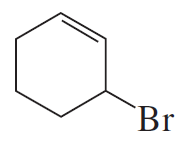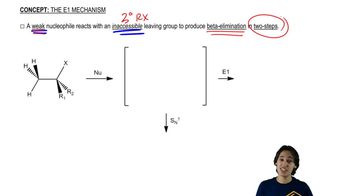Propose mechanisms for the following reactions.
(a)
HINT: Alcohol dehydrations usually go through E1 elimination of the protonated alcohol, with a carbocation intermediate. Rearrangements are common.

 Verified step by step guidance
Verified step by step guidance Verified video answer for a similar problem:
Verified video answer for a similar problem:



 8:09m
8:09mMaster Drawing the E1 Mechanism. with a bite sized video explanation from Johnny
Start learning